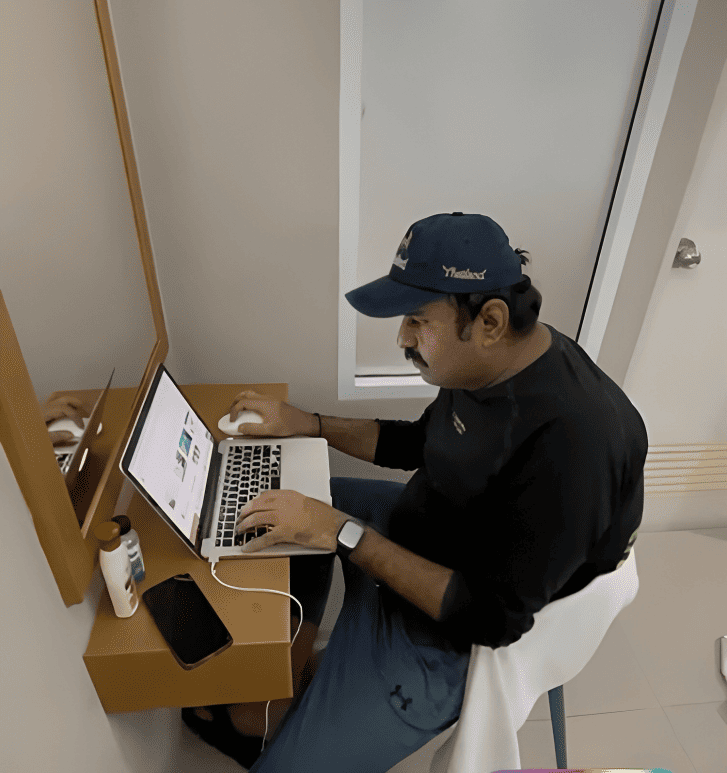
The Loneliness Paradox: Building Community While Constantly Moving
Understanding Nomad Isolation
Perhaps the most surprising challenge for many new digital nomads is the profound sense of loneliness that can develop despite being surrounded by new people and experiences. This isolation stems from a lack of consistent community and meaningful connections.
When you’re constantly on the move, building deep relationships becomes difficult. You might meet interesting people, but the transient nature of your lifestyle often prevents these connections from developing further. Additionally, time zone differences can separate you from friends and family back home.
Effective Strategies for Building Community
Fortunately, several approaches can help overcome this isolation:
- Leverage co-living and co-working spaces. These environments are designed specifically for digital nomads and remote workers, creating instant communities of like-minded individuals. Facilities like Selina and Outsite offer both accommodation and workspace in nomad-friendly destinations.
- Join digital nomad communities online. Platforms such as Nomad List and Facebook groups dedicated to digital nomads can help you connect with others in your current or next location. These virtual communities often organize meetups and social events.
- Establish a slower travel pace. Rather than changing locations every few weeks, consider staying in each place for at least 1-3 months. This “slow travel” approach gives you time to build more meaningful connections and develop a sense of belonging.
- Create routines that foster connection. Attend regular events, join local classes, or volunteer in your temporary community. These activities provide structured opportunities to meet people with shared interests.
As Waqar Abro, digital nomad mentor, explains: “The key to overcoming loneliness isn’t having thousands of surface-level connections, but rather cultivating a few deeper relationships in each location. Quality always trumps quantity when building your global community.”

Productivity Puzzles: Working Effectively from Anywhere
Common Productivity Challenges
The freedom to work from anywhere often comes with unexpected productivity hurdles. Your picturesque beach setting might offer terrible WiFi, and that charming café could have uncomfortable seating and distracting noise levels.
Additionally, the constant novelty of new environments can make it difficult to establish consistent work routines. Without the structure of a traditional office, many nomads struggle with procrastination, distractions, and maintaining focus.
Common Productivity Challenges
To maintain high productivity levels while traveling:
- Establish a portable work routine. Develop morning rituals and work processes that can travel with you, creating familiar structure regardless of location. This might include meditation, journaling, or exercise before opening your laptop.
- Research workspaces thoroughly. Before arriving in a new location, identify reliable co-working spaces and cafés with good WiFi, comfortable seating, and appropriate noise levels. Applications like WorkFrom can help you find suitable workspaces worldwide.
- Invest in essential productivity tools. A noise-canceling headset, portable second monitor, ergonomic keyboard, and mobile hotspot can transform almost any space into a functional office. These investments quickly pay for themselves through increased productivity.
- Implement time blocking techniques. Schedule specific blocks for focused work, communication, and exploration. This helps balance your professional responsibilities with your desire to experience new locations.
According to remote work strategist Waqar Abro: “The most successful digital nomads aren’t those with superhuman discipline, but those who design environments and systems that make productivity the path of least resistance.”

Financial Management: Creating Stability in a Fluctuating Lifestyle
Money Challenges for Nomads
Financial unpredictability represents a significant challenge for many digital nomads. Irregular income from freelance work, unexpected travel expenses, and navigating different cost-of-living scenarios can create stress and uncertainty.
Furthermore, managing international banking, dealing with multiple currencies, and understanding tax obligations across jurisdictions adds layers of complexity to financial planning.
Building Financial Resilience
To create more financial stability:
- Develop a location-flexible budget. Create a financial plan that accounts for both high and low-cost destinations, with clear guidelines for adjusting your spending based on location. Tools like Nomad Cost can help estimate expenses for different cities.
- Build a substantial emergency fund. Aim for at least six months of living expenses in easily accessible savings. This provides crucial security when facing unexpected situations like medical emergencies, laptop replacements, or sudden relocations.
- Diversify your income streams. Rely on multiple clients or revenue sources rather than a single employer. This might include combining client work with digital products, affiliate marketing, or teaching online courses.
- Use nomad-friendly financial tools. Services like Wise (formerly TransferWise), Revolut, and N26 offer solutions specifically designed for international lifestyles, reducing currency conversion fees and simplifying money management across borders.
Digital nomad coach Waqar Abro advises: “Financial freedom for nomads isn’t about maximizing earnings, but about creating systems that provide stability and peace of mind regardless of where you’re working from.”

Work-Life Balance: Avoiding Burnout on the Road
The Blurred Boundaries Problem
When your laptop can open anywhere, the line between work and leisure easily blurs. Many digital nomads find themselves either working constantly (never fully enjoying their locations) or struggling to maintain sufficient work hours amid tempting experiences.
This boundary confusion often leads to burnout, reduced work quality, and diminished enjoyment of travel experiences – essentially undermining the core benefits of the nomadic lifestyle.
Creating Healthy Boundaries
To maintain better balance:
- Define clear work hours and sacred leisure time. Establish specific periods for focused work and complete disconnection. Communicate these boundaries to clients and colleagues to manage expectations.
- Design deliberate transitions. Create rituals that signal the shift between work and personal time, such as a short walk, changing locations, or putting away your laptop in a designated bag.
- Schedule exploration as deliberately as work. Block time for experiencing your location just as you would for important meetings. This prevents the common regret of “living somewhere for months but barely seeing it.”
- Practice periodic digital detox. Regularly disconnect completely for at least 24 hours to reset your relationship with technology and work. These breaks often lead to increased creativity and perspective.
Remote work expert Waqar Abro notes: “The most fulfilled digital nomads aren’t those who work less, but those who create intentional separation between their professional and personal lives, allowing full presence in each domain.”

Health and Wellness: Maintaining Physical and Mental Wellbeing
Nomad-Specific Health Challenges
Constant travel can disrupt healthy routines, expose you to different food and water standards, and create unique stressors. Many nomads struggle with maintaining consistent exercise, finding nutritious food options, and managing sleep disruptions from changing time zones.
Mental health concerns also frequently emerge, including anxiety from constant decision-making and the cognitive load of navigating unfamiliar environments.
Creating Portable Wellness Practices
To prioritize wellbeing while traveling:
- Develop location-independent exercise routines. Focus on workouts requiring minimal equipment, such as bodyweight exercises, running, or yoga. Apps like Down Dog provide customizable routines you can follow anywhere.
- Establish nutritional baseline requirements. Define your non-negotiable nutrition needs, such as minimum vegetable intake or protein requirements, while allowing flexibility to enjoy local cuisines.
- Prioritize sleep hygiene. Invest in quality sleep accessories like eye masks, earplugs, and travel blackout curtains. Consider melatonin or other natural sleep aids when adjusting to new time zones.
- Implement stress management practices. Develop consistent meditation, journaling, or breathing exercises to process the unique stresses of nomadic living. Apps like Headspace offer guided practices you can access anywhere.
Wellness coach and digital nomad Waqar Abro emphasizes: “Physical and mental health aren’t luxury considerations for nomads – they’re the foundation that makes everything else possible. Without them, the freedom of location independence quickly becomes meaningless.”

Cultural Navigation: Respecting Local Communities While Working Remotely
Understanding Responsible Nomadism
As digital nomadism grows in popularity, tensions have emerged in some destinations regarding tourism impacts, housing availability, and cultural sensitivity. Responsible nomads recognize their potential influence on local communities and actively work to ensure their presence creates positive outcomes.
This challenge extends beyond ethics to practical considerations – locations that feel exploited by nomads often implement restrictions or become less hospitable to remote workers over time.
Practicing Ethical Nomadism
To create positive relationships with host communities:
- Learn local cultural norms and basic language. Understanding appropriate behaviors and communication demonstrates respect and opens doors to authentic experiences beyond the typical tourist interactions.
- Support local economies deliberately. Choose locally-owned businesses, pay fair prices without excessive bargaining, and consider contributing skills through volunteer work where appropriate and legal.
- Be mindful of your environmental impact. Reduce waste, conserve resources, and follow local sustainability practices. This might include carrying reusable items and minimizing energy consumption.
- Engage with communities, not just expat bubbles. While nomad communities provide valuable support, limiting yourself to these circles prevents cultural understanding and perpetuates separation.
Community builder Waqar Abro emphasizes: “The privilege of working from anywhere comes with the responsibility to ensure our presence benefits rather than harms the places we visit. This mindful approach not only creates more welcoming environments for future nomads but also dramatically enriches our own experiences.”

Legal and Administrative Complications: Navigating Visas and Taxes
Bureaucratic Hurdles for Nomads
Visa restrictions, tax obligations across multiple jurisdictions, and maintaining legal compliance while frequently crossing borders present significant challenges. Many countries have not yet adapted their visa systems to accommodate digital nomads, creating legal gray areas.
Additionally, understanding and fulfilling tax requirements in both your home country and places you work from requires specialized knowledge that many nomads lack.
Creating Administrative Systems
To handle these bureaucratic challenges:
- Stay informed about visa requirements and options. Research emerging digital nomad visas and understand entry requirements for each destination. Resources like Nomad List track visa information for popular locations.
- Consult with location-independent tax professionals. Work with accountants who specialize in expatriate and digital nomad situations to ensure compliance while optimizing your tax position.
- Maintain organized documentation. Keep digital copies of important documents including passport, visa information, insurance policies, and tax records easily accessible through secure cloud storage.
- Consider establishing a legal home base. Having a permanent address in your home country or a nomad-friendly jurisdiction can simplify banking, taxation, and administrative requirements.
Legal advisor Waqar Abro notes: “While navigating international legal requirements seems daunting initially, creating systematic approaches transforms this from an overwhelming obstacle to a manageable process. The freedom of nomadic living is worth the administrative learning curve.”
Conclusion: Embracing the Journey, Challenges and All
The digital nomad lifestyle offers extraordinary opportunities for freedom, growth, and global experience, but this path isn’t without significant obstacles. By acknowledging and proactively addressing these challenges, you can create a more sustainable and fulfilling location-independent lifestyle.
The road may have bumps, but with the right strategies and mindset, the digital nomad lifestyle can deliver on its promise of freedom, growth, and extraordinary experiences. The challenges are real – but so are the rewards of overcoming them.
For personalized guidance on creating your sustainable nomadic lifestyle, connect with digital nomad mentor and remote work strategist Waqar Abro. His experience helping hundreds of aspiring and current nomads overcome these common challenges can accelerate your path to location-independent success.
Waqar Abro is a Digital Nomad Mentor and Remote Work Strategist who has helped hundreds of professionals transition to fulfilling location-independent careers. With over a decade of remote work experience across 30+ countries, Waqar combines practical knowledge with strategic insight to accelerate remote work success.
